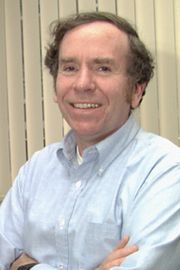
Research Summary
Ion channels act as molecular transducers, responding to chemical, mechanical, or electrical stimuli by opening a pore to allow ionic current to flow. Work in my laboratory seeks to clarify the transduction mechanisms of channel proteins. We use single-particle imaging in electron cryo-microscopy to obtain three-dimensional structures of channel proteins. To this end we are developing new computational and experimental methods for imaging membrane proteins in membranes. To study function we use patch-clamp recordings for the sensitive measurement of ion channel currents and collaborate with colleagues in Yale engineering departments to advance this technology as well.
Extensive Research Description
My research work centers on the structure and function of ion channels, which are membrane proteins that selectively control the passage of ions across cell membranes. The activity of ion channels is central to very many physiological processes, including synaptic transmission and impulse propagation in the nervous system, the control of cardiac function and vascular resistance, salt and water transport in epithelia, and the control of hormone secretion.
Central to the understanding of ion channel function is the characterization of the stochastic 'gating' behavior of single channels. We are particularly interested in the 'voltage sensor' of voltage-gated potassium channels, and how it couples the transmembrane potential to channel gating. Towards an understanding of this protein structure, we are pursuing studies using electron cryo-microscopy (cryo-EM) of voltage-gated channel proteins. Electron microscopes have sufficient resolution to provide atomic-detail images, but 'radiation damage' by the electron beam precludes structure determination from a single molecule. Instead, images from many individual protein molecules must be combined to yield even low-resolution structural information. Working with potassium channels reconstituted into lipid vesicles, we use novel specimen substrates and 'single-particle' image processing methods to obtain the three-dimensional structure of these proteins.
The process of obtaining 3D protein structures from electron micrographs is a very interesting mathematical problem. We are pursuing new approaches to make this process more reliable and able to work on smaller protein particles (like ion channels) than those investigated in the past.
Source: http://bbs.yale.edu/people/fred_sigworth-3.profile